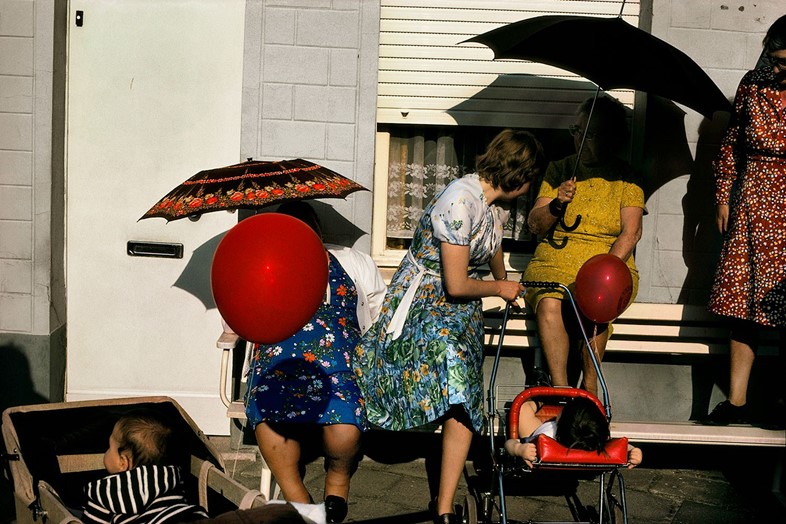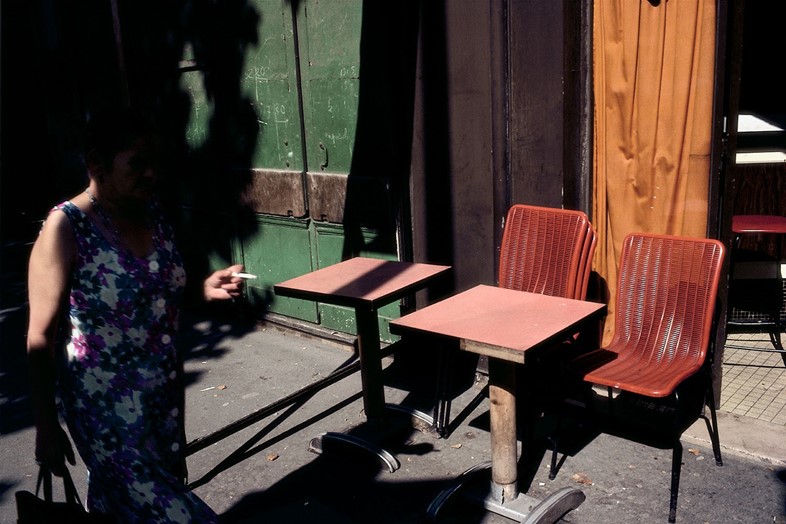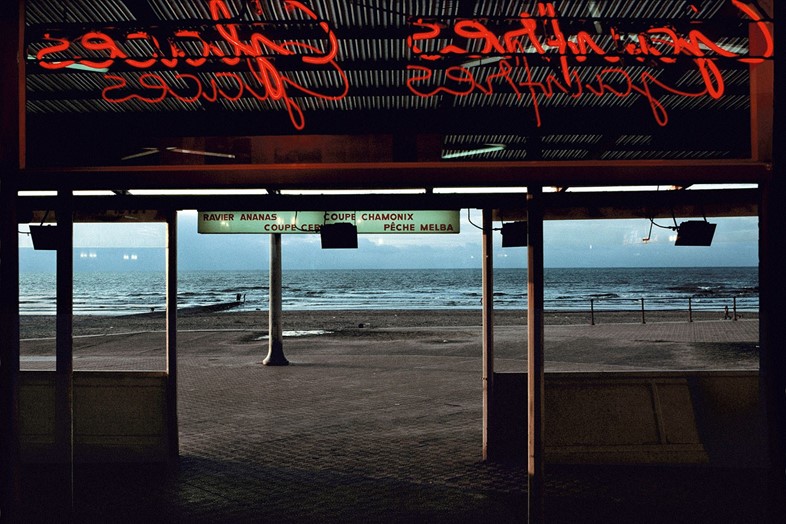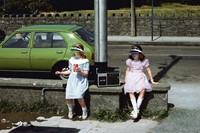As his vibrant work goes on show in London, we unravel some of the most striking images by the Belgian photographer
“Harry Gruyaert photographs colour”; curator François Hébel couldn’t have put it better. Born in Antwerp in 1941, Gruyaert took up photography against his father’s aspirations, relocating to Paris in his early 20s to work as an assistant to William Klein. After a short-lived fascination with fashion photography, Gruyaert’s journey through colour began with a visit to Morocco in 1966. Along with Joel Meyerovitz, Stephen Shore and Saul Leiter, Gruyaert was one of the first to exploit the creative power of colour film, a tool until then relegated to the field of advertising. Constructed around bold graphics and suggestive lighting and inspired by Michelangelo Antonioni’s aesthetically complex cinematography, Gruyaert’s saturated, non-narrative images forged new ground in the photographic scene of the time.
Perceiving colour as a means to awake the senses and stimulate physical experiences, Gruyaert travelled extensively across Europe, North Africa and the Middle East, living out of his Volkswagen Kombi for the most part. “I move around a lot, I like to be excited and discover things. It’s about freedom. If you stay in the same place for too long you’ll start to think it’s normal, but nothing is normal. One shouldn’t get used to things; it’s really important to me to see things with fresh eyes”, Gruyaert said of his need to explore the world. While in New York, he was introduced to pop art, which became a strong influence in his later work, and inspired his renowned series TV Shots (1972). While he admitted that it took him time to discover colour in his own country due to a sense of sadness and hostility that his homeland evoked in him, Gruyaert returned to Belgium in the early 1980s – shot over a decade, Made In Belgium is possibly one of his most powerful works. Now in his 70s and a member of the elite Magnum photo agency, Gruyaert has no desire to put down his camera, his biggest irk being the shots he isn’t able to capture, “the only thing that bothers me are the pictures that I miss.”
Faceless silhouettes, dramatic palettes and dense compositions have become trademarks in the photographer’s theatrical approach to mundane tasks and situations. In celebration of his new show at the Magnum Print Room and the release of his first English-language book, the Gruyaert takes us back to the pinnacle of his career to reflect and reminisce upon some of the greatest images caught by his wandering lens. Gruyaert’s idiosyncratic shooting style is particularly evident in a photograph from his Ireland series. Taken in 1988 and capturing two little girls in matching frilled dresses, sitting on a concrete wall up against a green-hued backdrop, the image shows an everyday street scene in Galway, West Ireland. From the emerald and purple translucent visors to the red can of Coke, the blue straw and the 80s stereo, everything in the picture suggests a painstaking attention to detail, while revealing Gruyaert’s composed spontaneity that makes his photographs appear to be shot from the hip.

“In Ireland the landscape was really amazing. I remember I was touched by those two girls, the way they dressed and all that green, maybe they reminded me of my daughters; I think that was the first time I took a picture of a young girl. I liked the symmetry and the can of Coke, but what made me stop was their attitude, they looked Irish. The whole picture looks Irish to me.”

“I was there for a parade, but more than the parade, I was watching the people watching the parade. The nice thing about this picture is that you don’t see the faces. I often shoot people from the back, it may be some form of timidity but it’s also the fact that I don’t necessarily think their faces would tell more than their bodies. When you shoot black and white faces are very important, but with colour photography it’s different. The balloon, the babies, the shadows... it’s a very complex photo, there are many elements that are difficult to control. Unlike Morocco, Belgium is much more aesthetic. I’m making fun of my people and my own upbringing; colour here also refers to my relationship to my country.”

“The difference between me and most French photographers who work in black and white is that I was influenced by pop art. Discovering pop art in New York for me was very important as I started looking at certain banalities in everyday life in a different way.”

“I love the coast in Belgium, it’s quite a special place to me so I go there quite often. This photo tells of the end of a holiday.”
Harry Gruyaert is at the Magnum Print Room until October 31. Harry Gruyaert is out now, published by Thames & Hudson.



